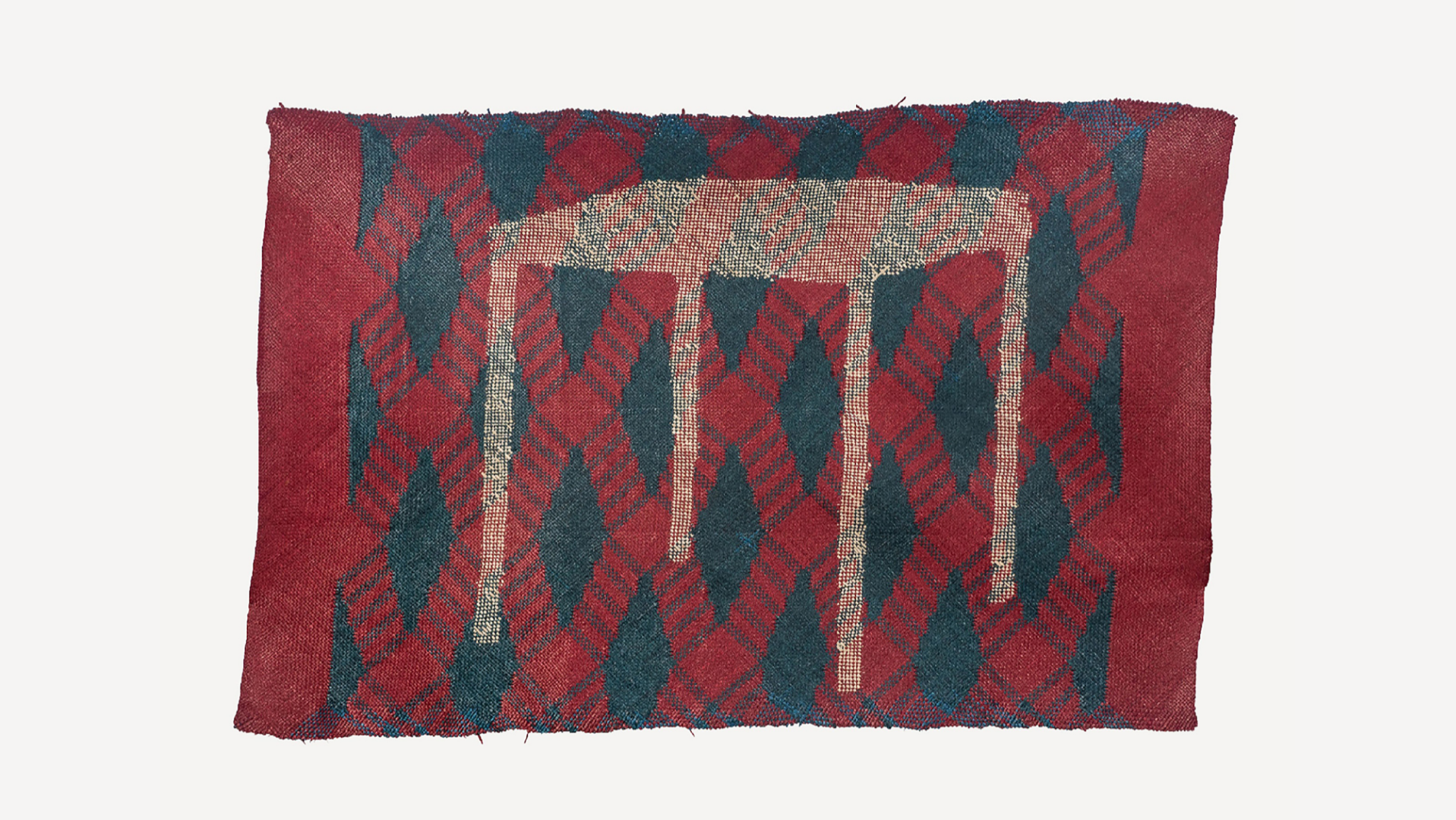- Academics
- Admissions
- Enrollment & Registration
- Research
- Academic & Creative Spaces
- Strategic Partnerships
- Our Impact
- Student Affairs
- Alumni
- About VCUarts Qatar
- Community & Continuing Education
ADMISSIONS FOR FALL 2025 NOW OPEN

paths of the wind weave shadows bare bones of a mat by Yee I-Lann
October 26 - December 4
THE GALLERY AT VCUARTS QATAR

Photo courtesy of the artist and Silverlens (Manila/New York)
Related Events
- Nov. 08, 4:00 – 5:00 PM – Exhibition Reception
- Nov. 08, 5:00 – 6:30 PM – Artist Talk: Yee I-Lann will present the Keynote Address at the 2025 Hamad bin Khalifa Symposium on Islamic Art. The event is free, but registration is required.
About the Exhibition
The Gallery at VCUarts Qatar is pleased to present, in partnership with the Hamad bin Khalifa Symposium on Islamic Art, paths of the wind weave shadows bare bones of a mat, an exhibition by artist Yee I-Lann.
In her exhibition paths of the wind weave shadows bare bones of a mat, artist Yee I-Lann challenges established grammars. The strained syntax of the exhibition’s title (borrowed from one of its featured works) stands in for the Malaysian artist’s larger project of testing conventions and applying pressure to encoded structures. The reader is pulled up by the absence of expected articles, prepositions and punctuation. These absences interrupt subject hierarchy and temporal continuity, making multiple, malleable readings available simultaneously. Nouns and adjectives double as verbs. Verbs double as nouns. For Yee, these kinds of generative disruptions are an essential part of the post-colonial effort. Rather than seeking to simply topple or invert structures of hegemonic power, Yee works to redistribute that power and agency within a democratic assembly: to revert, as she expresses it, “the beaurocrat’s desk back into the communal mat” – like the traditional tikar mats which served as the literal and symbolic seat of egalitarian tribal governance in pre-colonial Malaysia.[1]
…bare bones of a mat brings together four of Yee’s major bodies of work: TIKAR/MEJA, Picturing Power, Rasa Sayang, and Tikar Reben. TIKAR/MEJA illustrates the reversion of power structures described above: For the series, Yee collaborated with indigenous weavers from Bajau Sama Di Laut communities in Sabah, Malaysia to create brightly colored tikar mats bearing the silhouettes of western-style tables. “A table on a mat can be rolled up, ‘eaten’ by the mat, like a stone covered by paper in a game of rock paper scissors,” explains the artist. Picturing Power remixes archival photographs from Dutch-colonial Malaysia to subvert and un-fix the authority of colonial narratives, and to examine the complexity and complicity of photography’s role in the formation of Malaysian identity. For the Rasa Sayang works, Yee edited donated images of hugs, generating an alphabet from these gestures of embrace. The potency of these small acts of care is supercharged as each letterform is rendered in vibrating orange and blue. Begun in 2012, this typeface would later provide a literal body language for articulating, in poetic and cathartic terms, the emotional arc of the COVID 19 pandemic, asserting the necessity of human connection in times of alienation and division. Extending these themes, in Tikar Reben a 63 meter tikar “ribbon” becomes a figurative bridge between neighboring coastal communities. The locally-woven mat provides a cultural and economic tie, uniting peoples divided by legacies of nationalism and displacement. For Yee, engagements like these provide “a way of thinking, and rethinking, about how we use and share space – the space of community (politics), the space of storytelling, the space of cultural production and economics (art-making).”[3]
paths of the wind weave shadows bare bones of a mat is curated by Meriem Aiouna and Chase Westfall.
Special thanks to Silverlens Galleries (New York, Manila) and the Shane Akeroyd Collection.
[1] Yee I-Lann, conversation with the author, March 5, 2025.
[2] Pauline Fan, Rasa Sayang–A Sense of Loss and Love, exhibition essay (Mind Set Art Center, 2014).
[3] Yee I-Lann, “Art Basel OVR: Portals 2021,” Silverlens Galleries, June 16–19, 2021, https://www.silverlensgalleries.com/exhibitions/2021-06-16/art-basel-ovr-portals-2021.
Artist Biography
Yee I-Lann (b. 1971, Kota Kinabalu, Sabah, Malaysian Borneo) is an artist whose interdisciplinary practice spans photomedia, textiles, installation, filmmaking, and community collaboration. Her work explores the entanglements of colonial histories, local cosmologies, and structures of power across the Southeast Asian region and its global connectivities. In recent years, she has collaborated with Dusun and Bajau Sama Dilaut weavers in Sabah, developing a mat-based practice in which the tikar functions as medium, method, and philosophy—often centering counter-narratives and histories from below. These works explore decolonial imagination, collective making, cultural resilience, and the everyday as a site of critical engagement. Her art has been widely exhibited in museums and biennales across Asia, Europe, Australia, and North America, and is held in major international collections. Based in Kota Kinabalu, Yee has served on the boards of FINAS and Forever Sabah, and is co-founding partner of Kota-K Art Gallery. She describes herself as an “&”.

